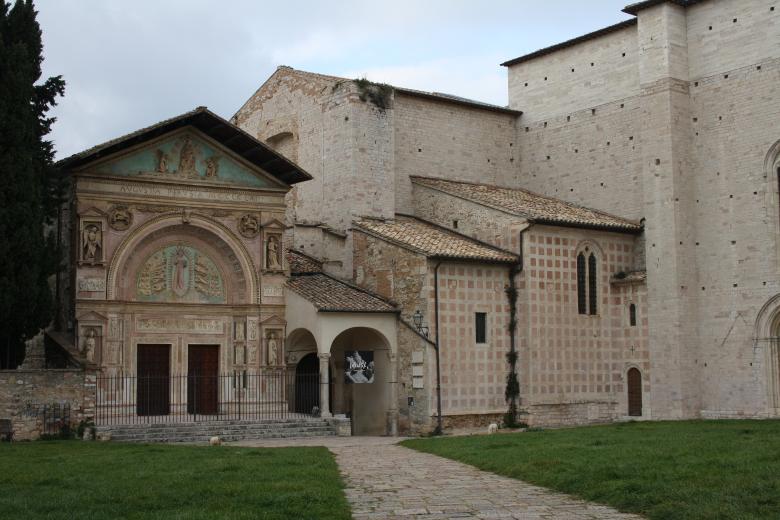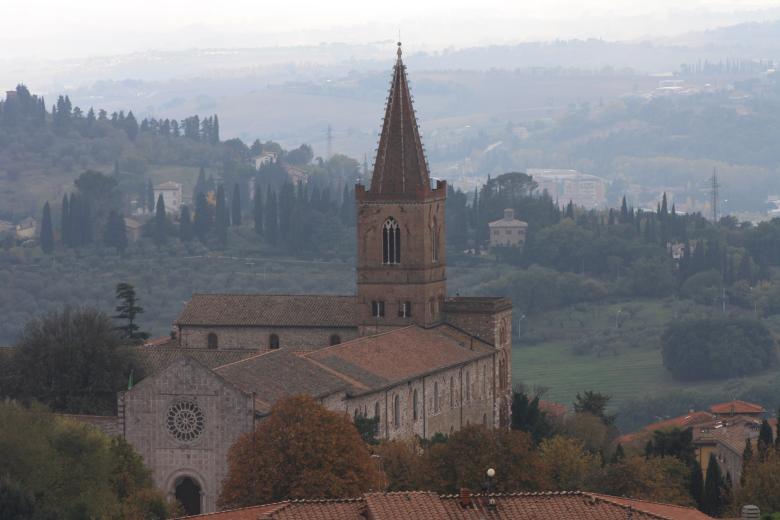From here the visitor can access the underground portion of the city through via Bagliona with its surviving medieval district, a point of greater picturesque atmosphere. Finally recovered in 1965, the rooms are today used as exhibition space and seat of the Fortress’ museum.
The original gate was destroyed when the Paolina Fortress was built (1540-43) and was partially re-assembled by Sangallo with the same orientation approximately 4 metres away, inserted as blind arch into the new masonry. Instead the doorjambs have been kept in their original position, incorporated into an highly militarised access area to the fortress. The travertine arch, about 4.40 metres wide, is traced by ashlars arranged radially, framed with two pilasters which give support to a jutting frame that carries the inscription Colonia Vibia / Augusta Perusia, similar to the one that appears on the Etruscan arch.
Between the arch and the frame there is a balustrade-shaped frieze overlooked by five figures separated by fluted pilasters surmounted by capitals with a “water leaves” pattern. In the centre there is a male bust depicting Tinia/Jupiter accompanied by two characters that are traditionally identified with the Dioscuri. Recently it has been proposed to identify them with the Lares Praestites, the heroic ancestors that in the Etruscan-Italic and Roman tradition protected the city walls. Two equine protomes are depicted at the ends. Three heads sculpted of peperino stone are set on the sides and above the arch. The Marzia Gate didn’t have defensive purposes but it represented the monumental entrance to the town, equipped with decorations of guardians ideally pointing towards Rome, peaceably welcoming the new powerful ally.

































